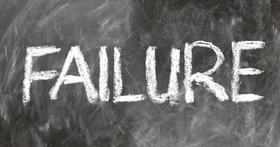Lake Attendance Center serves 545 students in grades Kindergarten-12.
The percentage of students achieving proficiency in math was 70-74% (which was higher than the Mississippi state average of 64%). The percentage of students achieving proficiency in reading/language arts was 55-59% (which was approximately equal to the Mississippi state average of 56%).
The student-teacher ratio of 21:1 was higher than the Mississippi state level of 13:1.
Minority enrollment was 40% of the student body (majority Black), which was lower than the Mississippi state average of 58% (majority Black).
School Overview
Grades Offered
Grades Kindergarten-12
Total Students
545 students
Total Classroom Teachers
26 teachers
School Rankings
Math Test Scores (% Proficient)
(11-12)70-74%
64%
Reading/Language Arts Test Scores (% Proficient)
(11-12)55-59%
56%
Student-Teacher Ratio
21:1
13:1
American Indian
n/a
1%
Asian
n/a
1%
Hispanic
1%
5%
Black
38%
47%
White
60%
42%
Hawaiian
n/a
n/a
Two or more races
1%
4%
All Ethnic Groups
Graduation Rate
(11-12)≥90%
75%
Eligible for Free Lunch
64%
68%
Eligible for Reduced Lunch
10%
6%
School Statewide Testing
School District Name
Source: National Center for Education Statistics (NCES), MS Dept. of Education
Frequently Asked Questions
What percent of students have achieved state testing proficiency in math and reading?
70-74% of students have achieved math proficiency (compared to the 64% MS state average), while 55-59% of students have achieved reading proficiency (compared to the 56% MS state average).
What is the graduation rate of Lake Attendance Center?
The graduation rate of Lake Attendance Center is 90%, which is higher than the Mississippi state average of 75%.
How many students attend Lake Attendance Center?
545 students attend Lake Attendance Center.
What is the racial composition of the student body?
60% of Lake Attendance Center students are White, 38% of students are Black, 1% of students are Hispanic, and 1% of students are Two or more races.
What is the student-teacher ratio of Lake Attendance Center?
Lake Attendance Center has a student ration of 21:1, which is higher than the Mississippi state average of 13:1.
What grades does Lake Attendance Center offer ?
Lake Attendance Center offers enrollment in grades Kindergarten-12
What school district is Lake Attendance Center part of?
Lake Attendance Center is part of Scott County School District.
Recent Articles

Year-Round Schooling in 2026: Updated Parent Guide
Explore the latest 2026 data, trends, costs, and parent planning tips in the ongoing debate over year-round schooling vs the traditional calendar.

No Child Left Behind: Past, Present, and Future of U.S. School Policy
Explore how No Child Left Behind evolved into ESSA, what it means for 2025‑26 schooling, and what parents need to know about testing, admissions planning, and funding.

Understanding Public School Fees & Optional Costs Guide
Discover what public school fees are required versus optional, with 2026 updates for parents, students, and educators on budgeting and planning.





